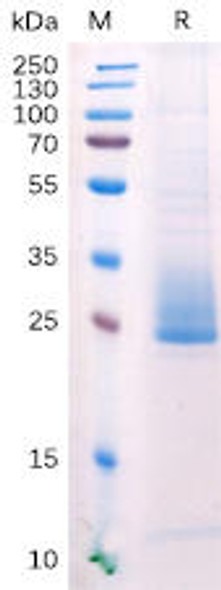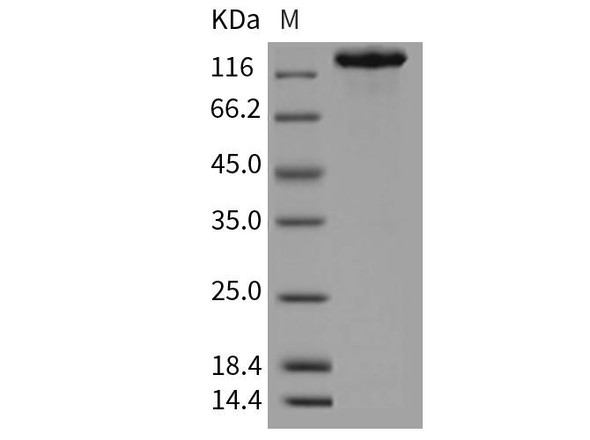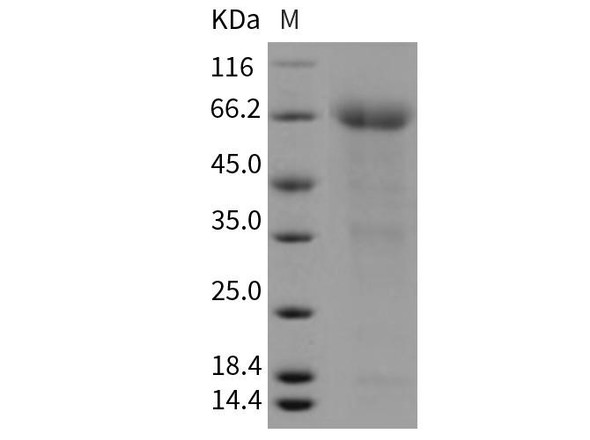ANGPTL3 is a secreted glycoprotein that is structurally related to the angiopoietins. Mature mouse ANGPTL3 contains an N-terminal coiled coil domain and a C-terminal fibrinogen-like domain. ANGPTL3 is expressed in the liver from early in development through adulthood. Full length ANGPTL3 circulates in the plasma as do the proteolytically separated N-and C-terminal fragments containing the coiled-coil domain and fibrinogen-like domains, respectively. ANGPTL3 is found as 70 kDa, 50 kDa, and 32 kDa species and can form weakly associated noncovalent multimers in vitro. ANGPTL3 directly inhibits lipoprotein lipase (LPL), an enzyme responsible for hydrolyzing circulating triglycerides. This activity requires a putative heparin binding motif that is N-terminal to the coiled coil domain. Proteolytic removal of the fibrinogen-like domain from the N-terminal fragment serves to activate ANGPTL3 and increase its ability to inhibit LPL in vitro and function in vivo. ANGPTL3 promotes an increase in circulating triglyceride levels without altering VLDL or HDL secretion or uptake. ANGPTL3 knockout mice are hypolipidemic and have elevated LPL activity. ANGPTL3 expression in vivo is up regulated by LXR agonists and down regulated by insulin, leptin, and TR beta agonists. Dysregulated ANGPTL3 expression and elevated plasma triglyceride levels are characteristic of some strains of obese and diabetic mice. ANGPTL3 does not bind Tie-1 or Tie-2 but its fibrinogen-like domain interacts with integrin alpha V beta 3 to induce endothelial cell adhesion, migration, and neovascularization. ANGPTL3, secreted by fetal liver cells, also promotes the expansion of hematopoietic stem cells. Mature mouse ANGPTL3 shares 22%-30% amino acid (aa) sequence identity with ANGPTL1, 2, 4, 6, and 7. It shares 77% aa sequence identity with human ANGPTL3.






